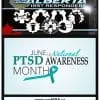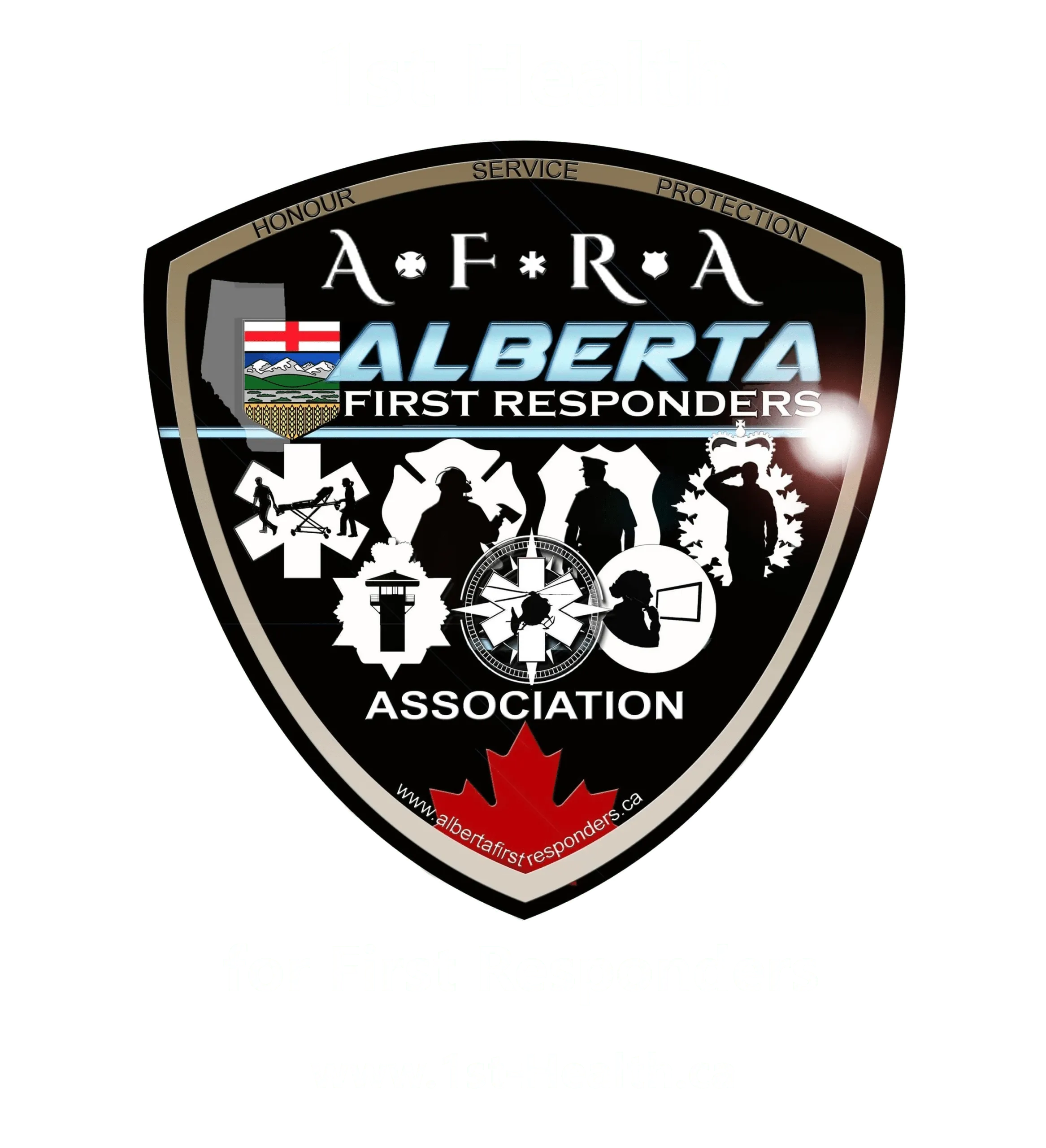Module 8: Breaking the Stigma
This is a call to action. You’ve joined a profession that demands unwavering courage and resilience. Yet, an invisible barrier often prevents even the bravest among you from prioritizing “1st Health” and that’s stigma. This module empowers you to understand, challenge, and ultimately dismantle the outdated narratives that prevent first responders from openly addressing their mental health. It’s about fostering a culture of openness, acceptance, and proactive wellness within your departments and throughout the broader first responder community in Alberta. Breaking stigma is not about being “soft.” It’s about being strategically strong. It’s about ensuring that every first responder has the opportunity to thrive, recover, and continue serving their community without carrying an unnecessary burden of shame or fear.
Understanding Stigma: The Invisible Barrier
Stigma is a powerful force that makes people less likely to seek help, even when they desperately need it. For first responders, it’s often rooted in a culture of self-reliance and strength.
Internalized Stigma:
This is the personal shame or embarrassment you might feel about your own struggles. It’s the voice in your head saying:
-
- “I should be able to handle this.”
- “If I admit I’m struggling, I’m weak.”
- “What will my crew think of me?”
- “I can’t let this affect my career.”
- This internal dialogue can prevent you from reaching out, leading to isolation and prolonged suffering. You might tell yourself you’re “not sick enough” or that it will just “go away.”
Public Stigma:
These are the societal judgments, negative stereotypes, and discriminatory attitudes about mental health that exist in the broader community. While attitudes are slowly changing, harmful stereotypes persist.
-
- Examples: Portrayals in media, jokes about mental illness, or the idea that mental health issues are “all in your head.”
- These external views can reinforce internalized shame and make first responders even more hesitant to disclose their struggles.
Organizational/Cultural Stigma:
This is arguably the most impactful for first responders. It refers to the unspoken rules, beliefs, or expectations within departments that discourage vulnerability or help-seeking.
-
- Examples: A belief that therapy is only for those “who can’t hack it,” a fear that seeking mental health support will lead to job reassignment or loss of certification, or a perceived lack of confidential support systems.
- This often isn’t malicious, but a legacy of older organizational cultures that emphasized stoicism above all else. This can create an environment where individuals suffer in silence rather than risk perceived professional repercussions.
The Culture of "Toughness" vs. True Strength
For generations, first responders have been conditioned to be “tough,” to “suck it up,” and to compartmentalize the horrors they witness. While resilience is crucial, this outdated notion of “toughness” is actively harming the very people it’s supposed to protect.
Challenging the Idea that Showing Vulnerability or Seeking Help is a Sign of Weakness:
-
- It takes immense strength to acknowledge pain, to ask for help, and to work on your own healing. Running into a burning building is brave; admitting you need support to continue running into burning buildings is equally, if not more, courageous.
- Vulnerability is not weakness; it is the birthplace of connection and innovation. When you’re authentic about your struggles, you open the door for others to do the same.
Redefining Strength:
True strength isn’t about never breaking; it’s about breaking and having the tools and support to put yourself back together stronger.
-
- True strength is: recognizing your limits, prioritizing your well-being (your “just Health”), and actively seeking the support you need to continue serving effectively and have a long, healthy career.
- True strength is: knowing when to tap out and let your relief take over, whether it’s on a call or in your life.
- True strength is: modelling healthy coping for your peers and the next generation of first responders.
The “Suck it Up” Mentality: How It Harms Individuals and Departments:
-
- This ingrained mindset, while historically perhaps intended to foster resilience, is now a primary driver of burnout, attrition, and untreated conditions.
- When first responders are expected to suppress their trauma responses, it doesn’t make the trauma disappear. It leads to:
- Increased Mental Health Disorders: PTSD, depression, anxiety, substance use disorders.
- Physical Health Deterioration: Chronic stress leads to heart disease, digestive issues, weakened immune systems.
- Relationship Strain: Irritability, emotional numbness, and withdrawal destroy personal relationships.
- Reduced Job Performance: Impaired judgment, increased errors, higher risk of accidents.
- Early Retirement/Leaving the Profession: Losing valuable, experienced first responders who could have continued to contribute.
This mindset is an operational hazard. An unwell first responder is a less effective first responder.
Debunking Myths About Mental Health
Misinformation fuels stigma. Let’s tackle some of the most persistent myths head-on:
Myth: “Only weak people get mental health issues.”
- Reality: Mental health challenges are universal human experiences. They affect people of all strengths, backgrounds, and professions – especially those in high-stress occupations like yours. Experiencing trauma symptoms, anxiety, or depression after what you witness is a normal human response, not a sign of weakness. Your brain and body are reacting to abnormal events.
Myth: “Therapy is only for ‘broken’ people.”
- Reality: Therapy is for anyone who wants to improve their mental well-being, gain coping skills, process difficult experiences, or simply gain perspective. Think of it as a professional debriefing or a mental fitness coach. Many successful, highly functional people utilize therapy to maintain their mental health, just as they visit a doctor for their physical health.
Myth: “If I seek help, it will ruin my career.”
- Reality: This is a deeply ingrained fear, but the landscape is rapidly changing, especially in Alberta. Most mental health support (EAP, private therapy, our app) is confidential and does not directly inform your employer. Furthermore, departments and governing bodies are increasingly recognizing the positive impact of seeking help on retention, performance, and long-term health. Untreated mental health issues are far more likely to negatively impact your career than proactively seeking support. Laws like Alberta’s presumptive legislation for PTSD for first responders acknowledge the occupational risk and encourage, rather than penalize, seeking help.
Real-world Examples of Successful First Responders Who Prioritize Their Mental Health:
- There are countless examples of active, decorated first responders, leaders, and veterans across Alberta and Canada who openly discuss their journey with mental health. They continue to serve with distinction because they sought help, built resilience, and made their “just Health” a priority. Look to your peer support teams, to leaders who speak openly, and to advocacy groups for these powerful testaments.
The Role of Leadership and Management
Breaking stigma requires a collective effort, and strong leadership is paramount in setting the tone for a mentally healthy workplace.
How Leadership Can Champion Mental Wellness through Policy, Training, and Open Communication:
- Leading by Example: When leaders openly discuss their own well-being or advocate for mental health resources, it sends a powerful message that it’s safe and encouraged.
- Clear Policies: Implementing and clearly communicating policies that protect confidentiality, support return-to-work after mental health leave, and actively promote mental wellness resources.
- Training: Providing mental health first aid training, trauma-informed training, and resilience-building programs for all personnel.
- Resource Visibility: Ensuring that access to EAPs, peer support, and other mental health services is prominently displayed and easily accessible.
- Regular Check-ins: Managers conducting informal, empathetic check-ins with their teams.
Creating Psychologically Safe Workplaces Where “It’s Okay to Not Be Okay”:
- A psychologically safe workplace is one where employees feel comfortable expressing concerns, asking questions, and being themselves without fear of negative consequences.
- This means fostering an environment where:
-
-
- Asking for help is seen as a sign of self-awareness and strength.
- Mistakes related to stress/fatigue are addressed constructively, with support rather than immediate punitive action.
- Compassion and empathy are valued alongside operational effectiveness.
- Open dialogue about mental health is normalized and encouraged, not just during crisis.
-
Being an Ally and a Role Model
Every single first responder has a role to play in breaking the stigma. Your actions, big or small, contribute to a more supportive environment.
How to Offer Support to a Struggling Colleague Without Judgment:
- Observe: Pay attention to changes in behaviour (irritability, withdrawal, fatigue, increased errors).
- Initiate a Private Conversation: “Hey, I’ve noticed you seem a bit [tired/quiet/stressed] lately. Is everything okay?”
- Listen Actively: (Revisit Module 6) Don’t interrupt, offer unsolicited advice, or try to “fix” it. Just listen and validate.
- Offer Specific Help: “Can I cover your call?” “Can I pick up some supplies for you?” “Do you want to grab coffee later and talk?”
- Share Resources: Gently suggest peer support, EAP, or direct them to the “1st Health” app. “I found this resource helpful when I was going through a tough time, maybe it could help you too.”
- Maintain Confidentiality: Unless there is a direct threat of harm.
Using Mindful Language Around Mental Health:
- Avoid derogatory terms like “crazy,” “nuts,” “unhinged.”
- Use person-first language: “a person experiencing depression” rather than “a depressed person.”
- Speak about mental health with the same respect and seriousness you would speak about physical health.
Leading by Example: Sharing Your Own Experiences (Appropriately) and Demonstrating Healthy Coping:
- You don’t need to overshare, but authentic, appropriate disclosure can be incredibly powerful.
- “That call was tough, I’m going to hit the gym to decompress.”
- “I’ve been feeling the cumulative stress, so I connected with our EAP.”
- “I make sure to get my sleep after a night shift, otherwise, I’m useless.”
These simple statements normalize help-seeking and healthy coping, showing others it’s not only acceptable but beneficial.
Your Personal Impact on Breaking the Stigma
Every conversation you have, every act of openness, every time you choose to prioritize “1st Health” – you are actively contributing to a more supportive and sustainable future for all Alberta first responders. The uniform means protection, service, and courage. Let’s make sure it also symbolizes a commitment to holistic well-being, where every individual knows they are supported, valued, and empowered to seek help when they need it. Your strength isn’t just in what you do for others, but in how you care for yourself and for each other.



